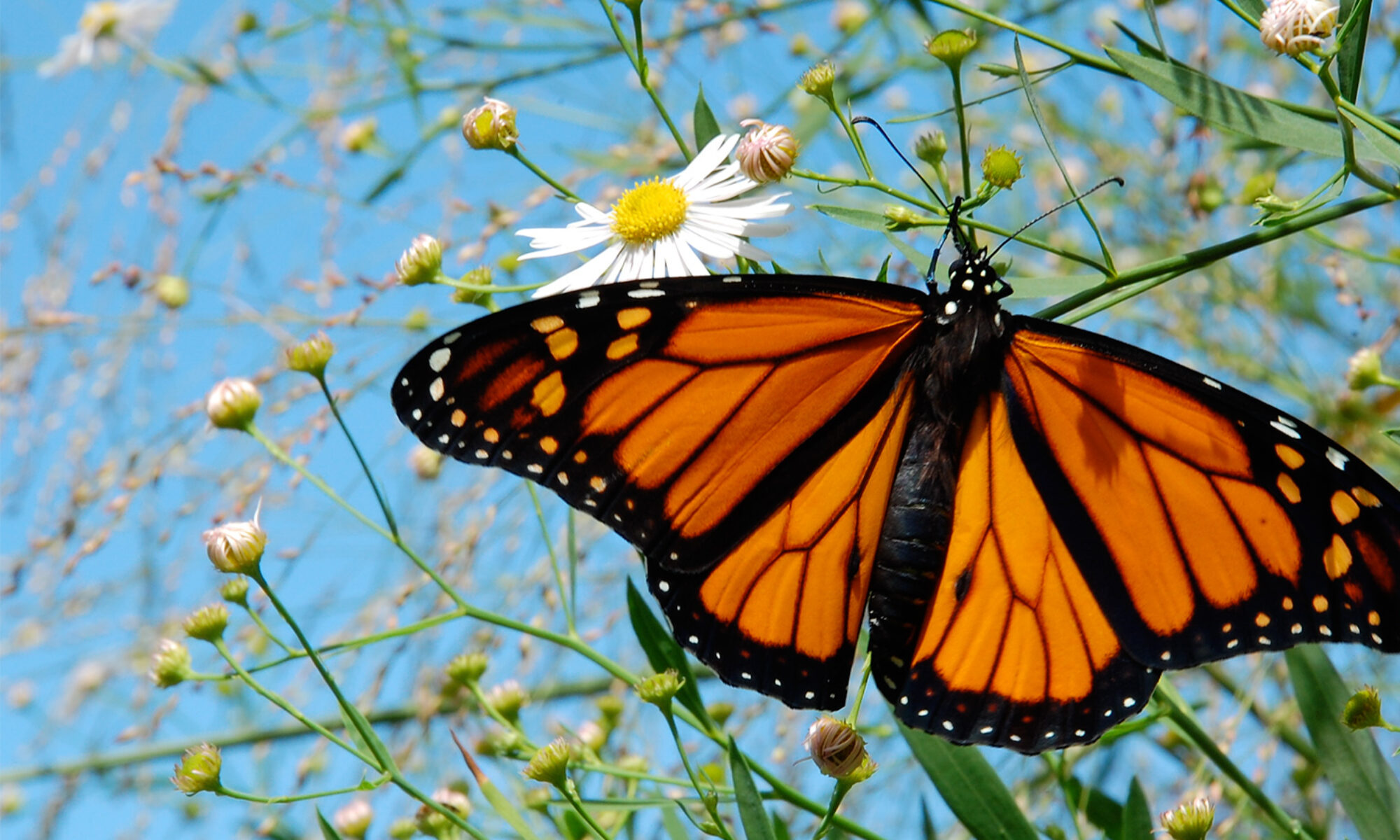DEFINITION OF TERMS:
- KEYSTONE means they are listed by National Wildlife Federation as core plants for a wildlife garden in my ecoregion (Ecoregion 8).
- NOT QUITE NATIVE means they are slightly out of range but adjacent to NYS as determined by GoBotany and NY Flora Atlas.
- Otherwise the plant is a NY-native or native to the area noted.
Canada burnet (Sanguisorba canadensis)
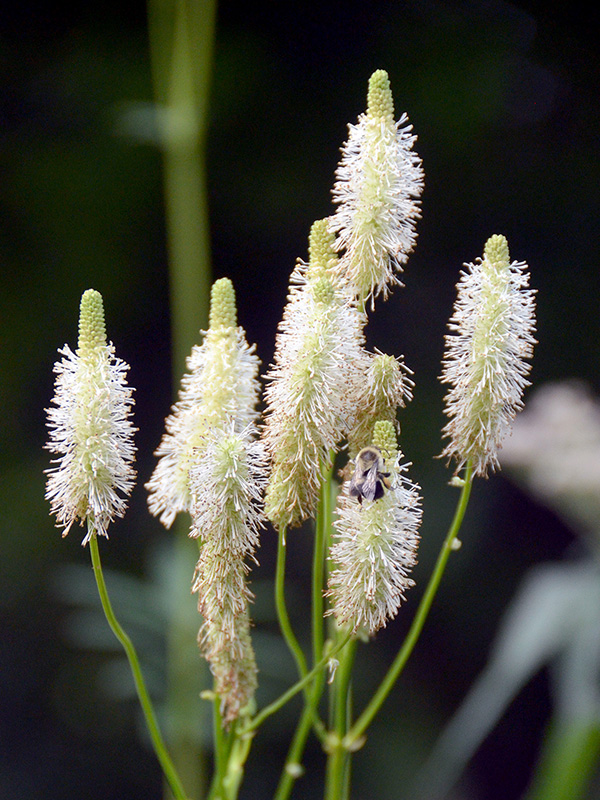
I have one Canada burnet plant, but I hope it will spread or that I can divide it. Its tall white flower is somewhat similar in appearance to another of my favorites: culver’s root.
It blooms quite late in the season, which is good for insects still hanging around, including monarch butterflies as they prepare to leave.
The leaves are beautiful. They have very clean and neatly-sawtoothed leaves.
- Learn more:
- Wildflower Center: Canada burnet
Late figwort (Scrophularia marilandica)
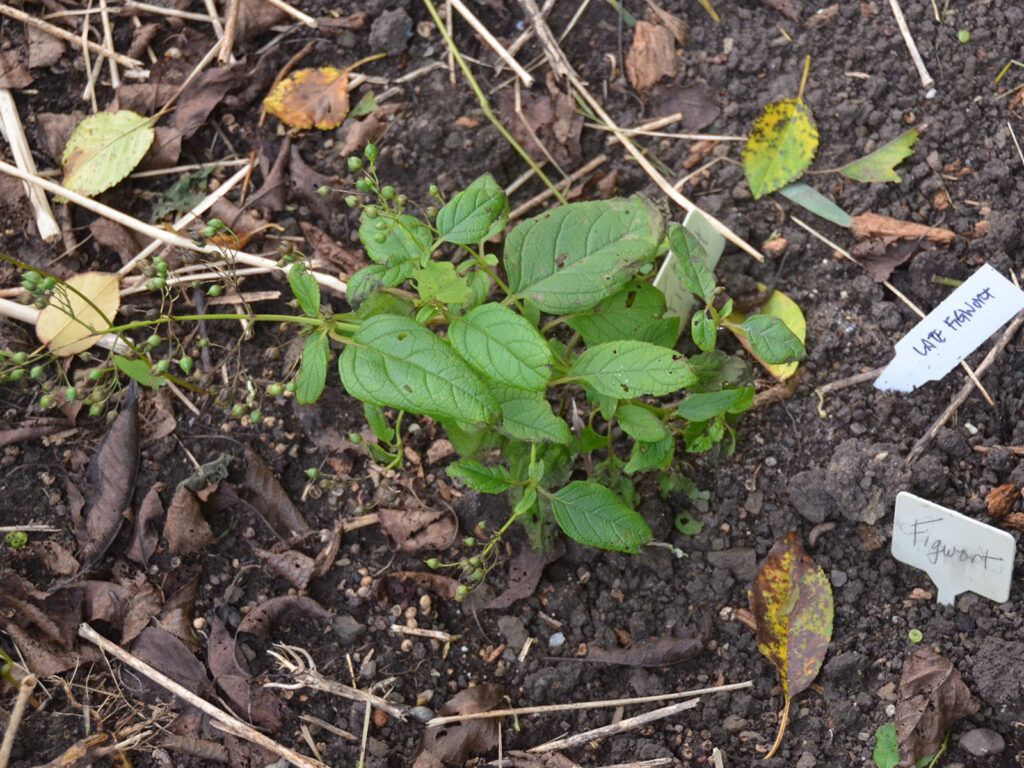
We bought this at our HGCNY 2021 Fall Plant Sale.
I mistakenly planted it in the jewelweed area and despite the plant marker I haven’t been able to locate it in 2022.
- Learn more:
- Wildflower Center: Late figwort
Hoary skullcap (Scutellaria incana Syn: S. integrifolia)
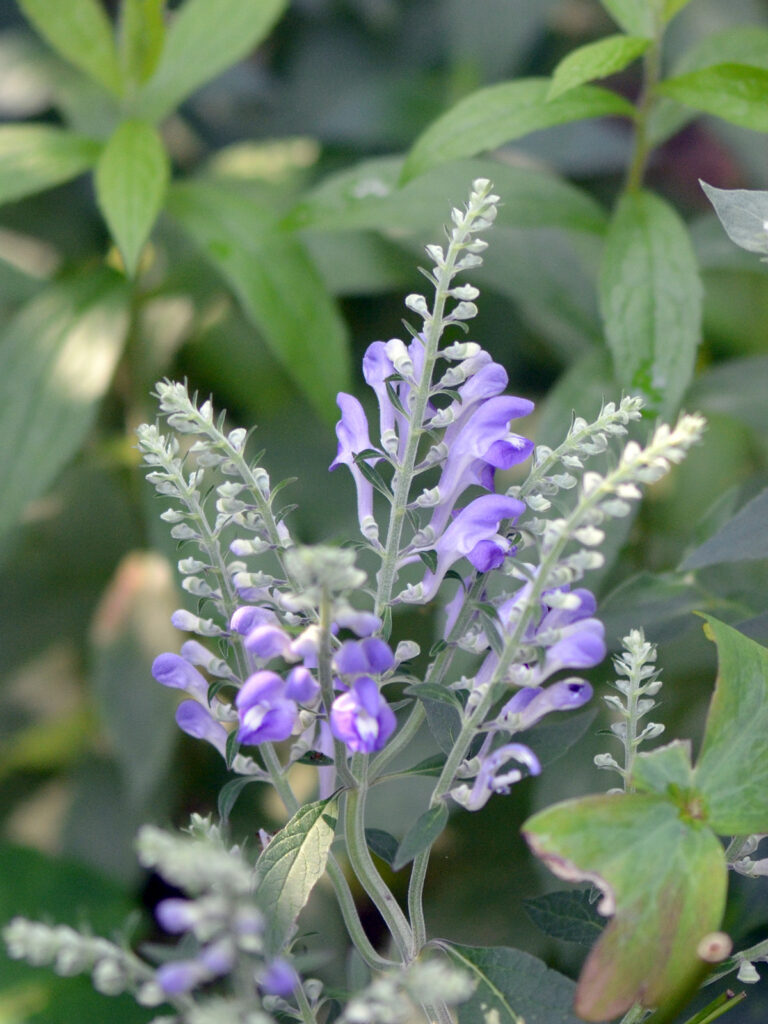
I planted this in fall 2019 in the shade under the pagoda dogwood.
Even though it’s not supposed to be deer-resistant, so far, it doesn’t seem to get eaten.
I love the flowers and the seedheads.
Deer Resistant: No
- Learn more:
- Wildflower Center: Hoary skullcap
SOUTHEAST NATIVE up to PA: Wild stonecrop (Sedum ternatum)
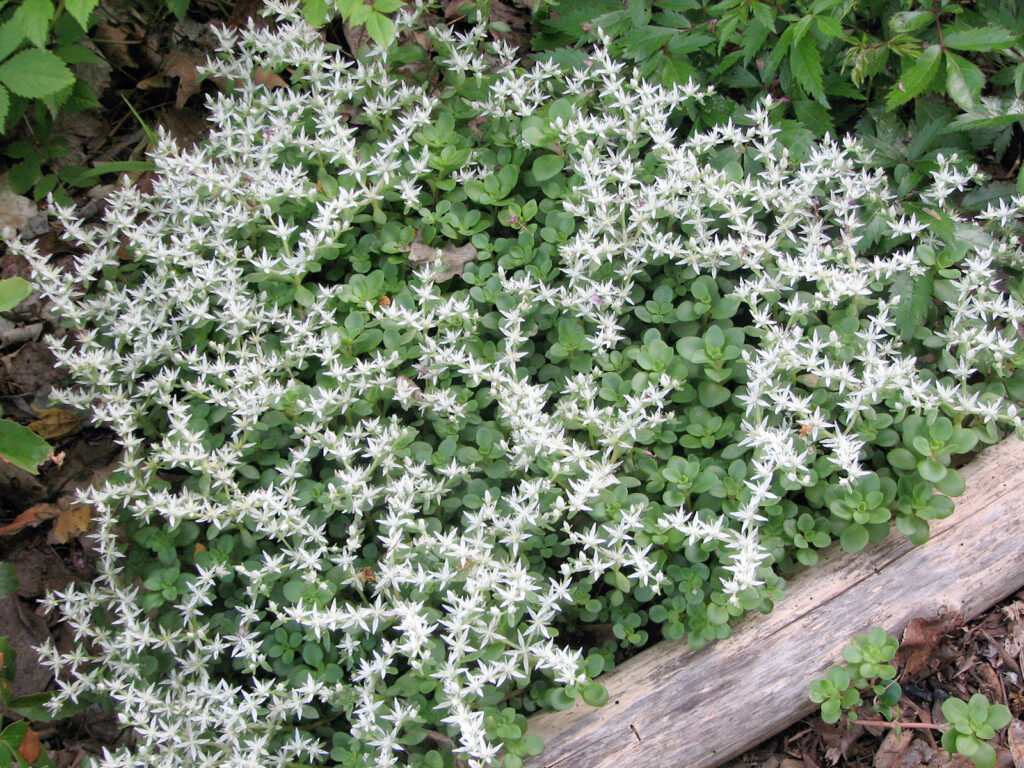
Since so many sedums aren’t native, I was thrilled to find this native sedum at a plant conference. I’ve really enjoyed this plant, especially when it’s in bloom, but its ground-hugging foliage makes a really attractive edging, too.
These beautiful starry flowers appear only in the spring, but its foliage stays nice and clean-looking and close to the ground (only an inch or two high).
It’s very easy to grow and to transplant. I’ve added bits to many bare spots in the front yard and it spreads very well to cover the ground. If it’s somewhere I don’t want it, it’s super-easy to pull out, though I haven’t had more than I want yet!
- Learn more:
- Wildflower Center: Wild stonecrop
Golden ragwort (Senecio aureus)
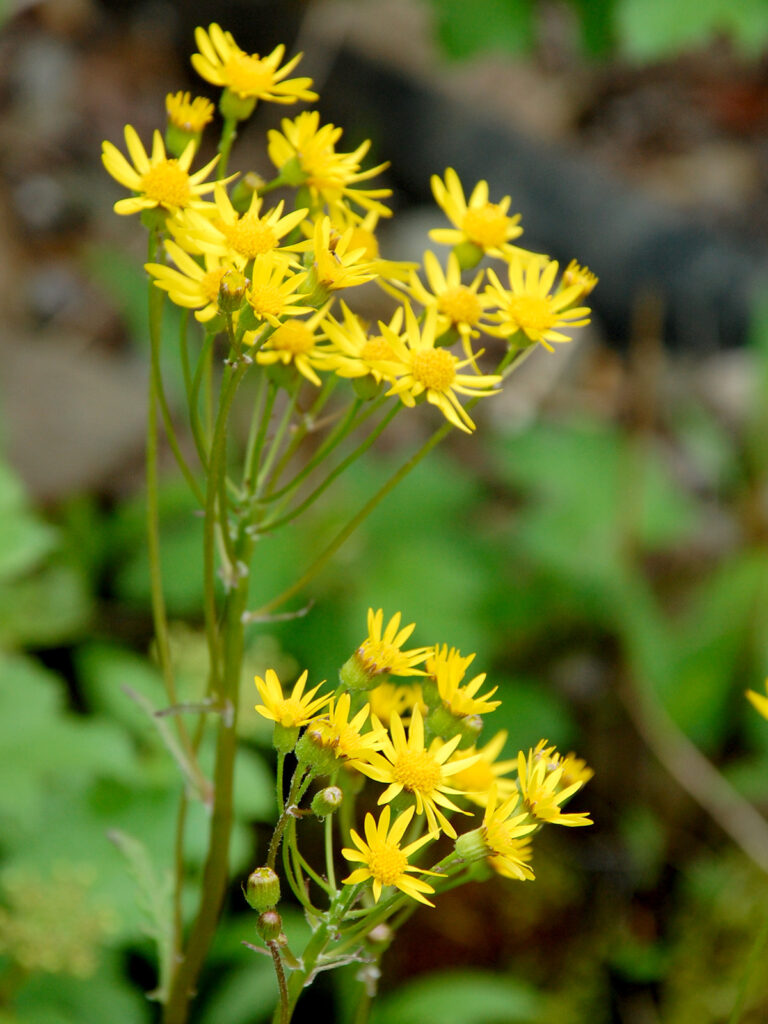
It’s nice to have this tall, sunny plant.
Also known as Packera aurea.
Wildlife: Bees
- Learn more:
- Wildflower Center: Golden ragwort
- EcoBeneficial: Included in short video on groundcovers
Wild senna (Senna hebecarpa) – see Cassia hebecarpa
Fire pink (Silene virginica)
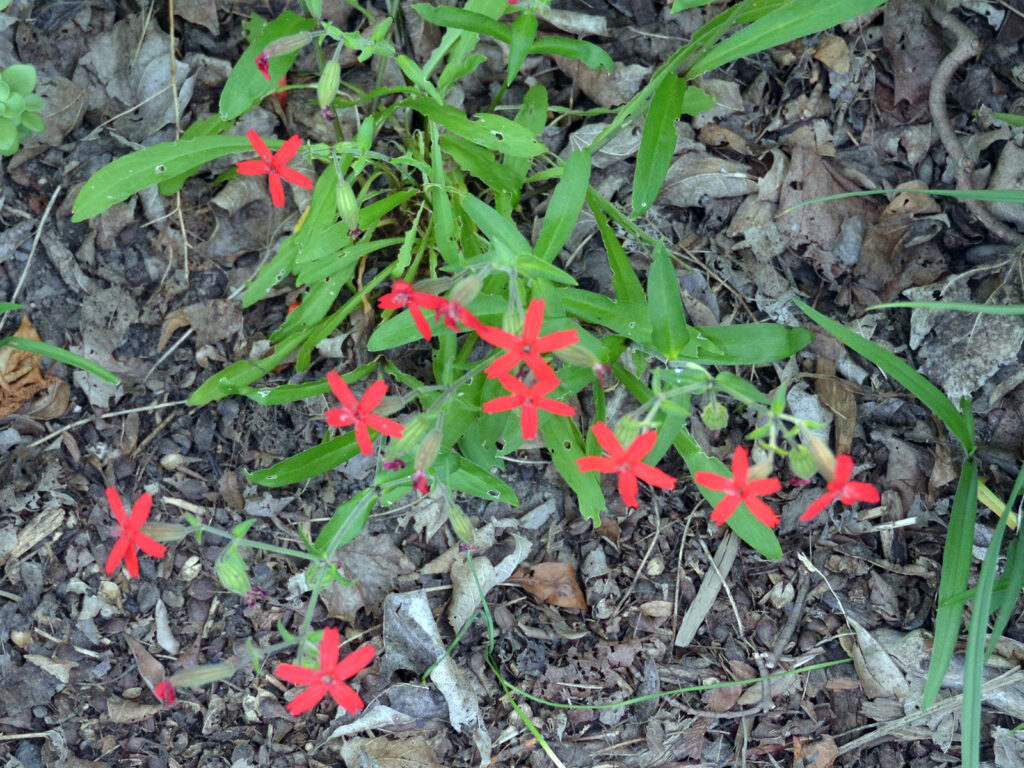
So far, this hasn’t spread as much as I’d like. I’ll have to make sure it has room and isn’t being overrun by more vigorous neighbors.
- Learn more:
- Wildflower Center: Fire pink
Blue-eyed grass (Sisyrinchium angustifolium)
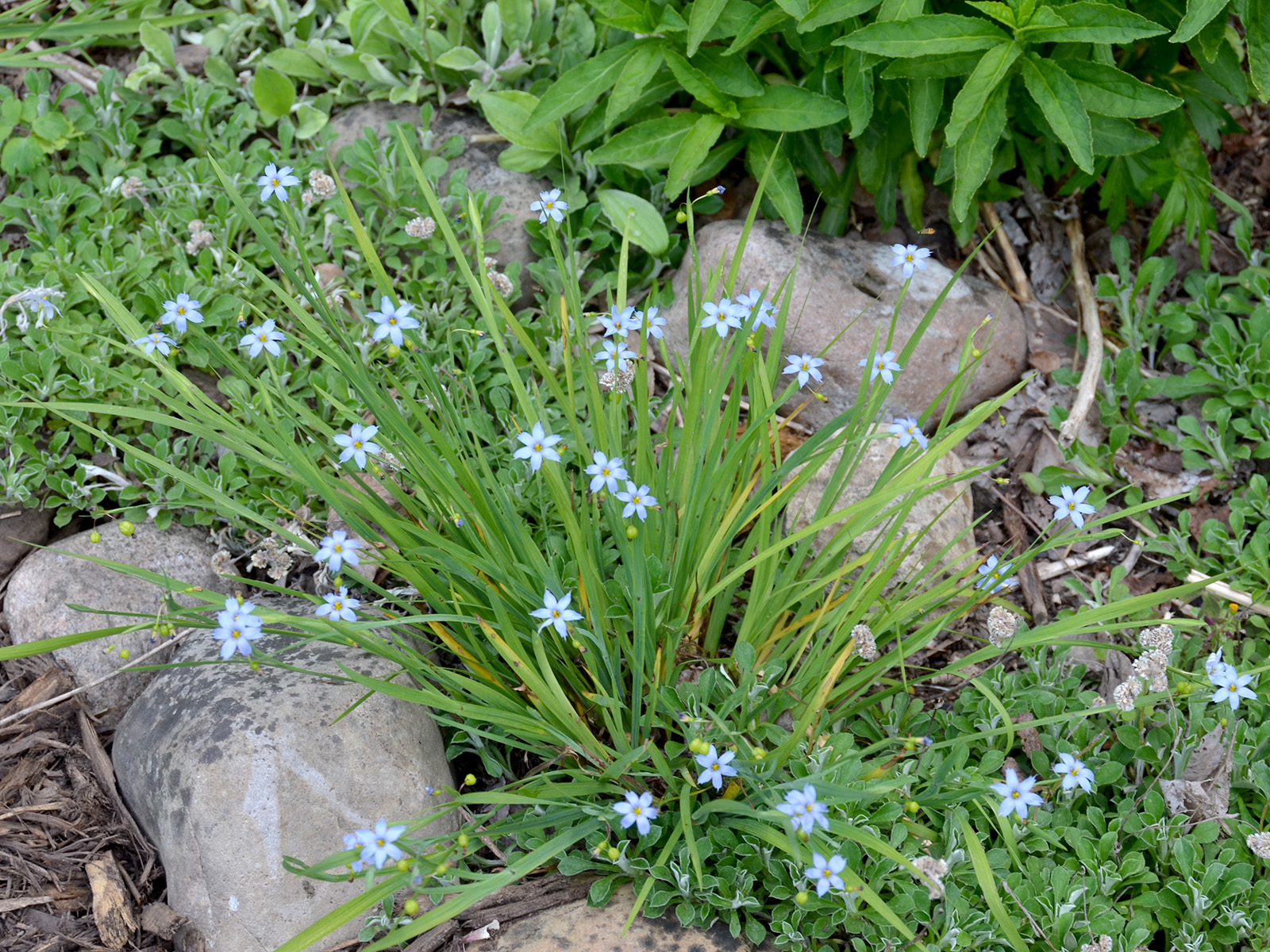
A very small little plant in the Iris family, which thankfully seems to spread a bit, though not aggressively at all. Its flowering habit is intriguing: flowers emerge from the top of the thin, strap-like foliage. A patch provides a sea of blue starry flowers. (And I really love to say its botanic name, too!)
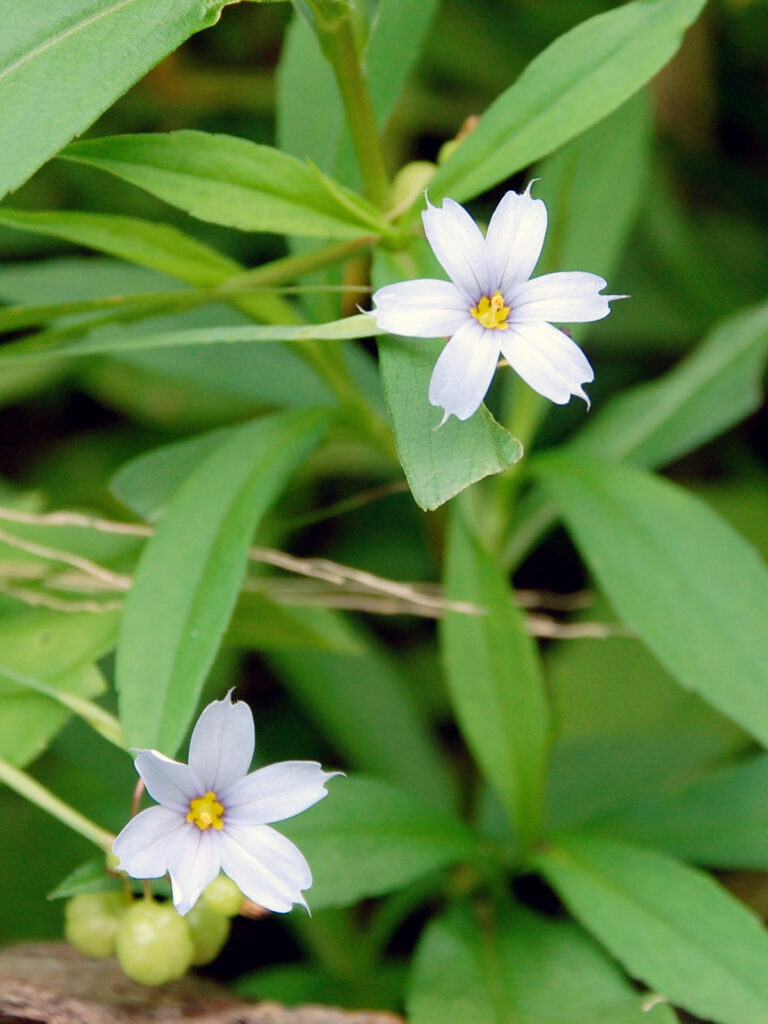
This is the small (though not tiny) flower. The plant is very attractive when there’s a host of these little blue flowers. The round things hanging from the plant are the seed capsules.
Deer resistance: No
- Learn more:
- Wildflower Center: Blue-eyed grass
Starry false Solomon’s seal (Smilacina stellata Syn: Maianthemum stellatum)
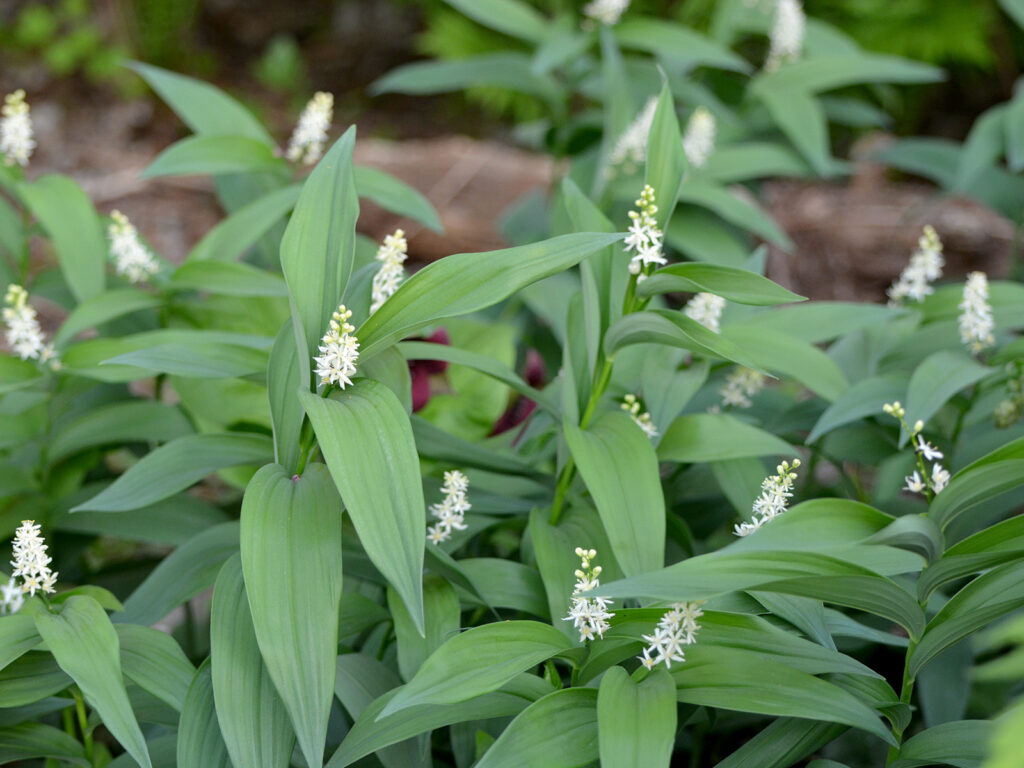
This is shorter than true Solomon’s seal and has a very different type of flower. It has the same lovely foliage as Solomon’s seal.
It continued to spread in my woodland area — so much so, eventually, that I had to remove it from some areas.
- Learn more:
- Wildflower Center: Starry false Solomon’s seal
